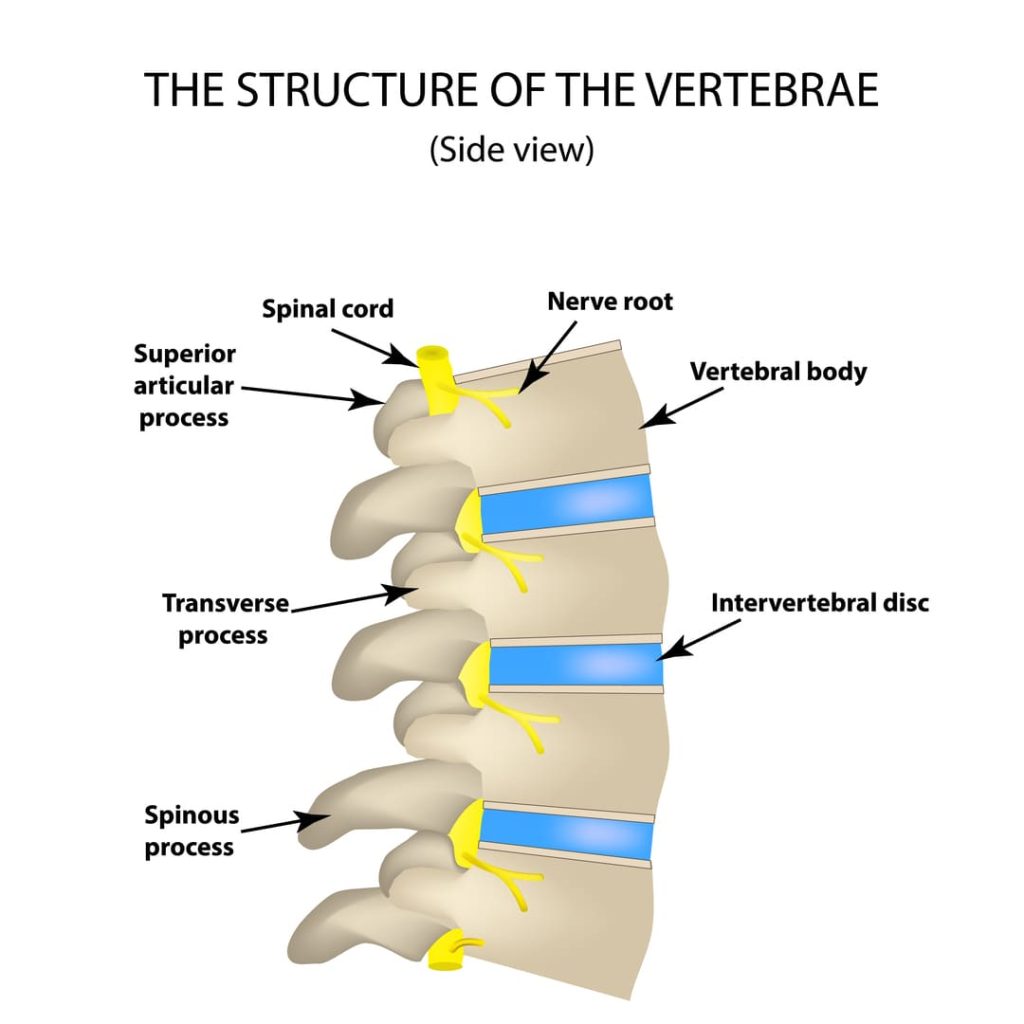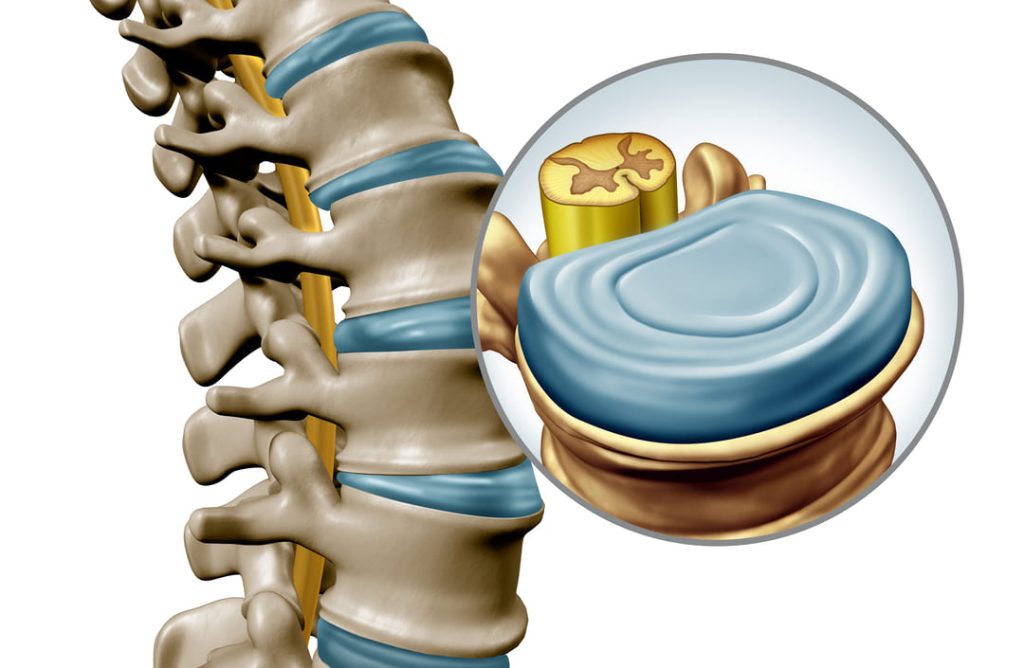Looking for Expert-Level VA Claim Answers?📱Call Us Now! 737-295-2226
If you’re living with Intervertebral Disc Syndrome (IVDS), you know how this condition can impact your daily life. The constant pain, numbness, and weakness in your back, legs, and arms can be debilitating, but you don’t have to face this challenge alone.
This guide will cover everything you need to know about IVDS, from its symptoms and causes to the treatments available. We’ll also dive into VA disability and the benefits available to you as a veteran.
We understand the difficulties of navigating the VA system, but we’re here to provide you with the information you need to make the most informed decisions. Whether you’re just starting to explore your options or already filing a claim, this guide is your ultimate resource for VA disability for IVDS.

Deserve a Higher VA Rating?
Book a no-obligation VA Claim Discovery Call with an experienced team member. We’ll review your situation, spot what the VA may have missed, and help you map out a strategy to unlock the VA disability rating and tax-free compensation you’ve earned for your service. Click the red button below to book your call.
What is Intervertebral Disc Syndrome (IVDS)?
Intervertebral Disc Syndrome (IVDS) is a condition that affects the discs between the vertebrae in your spine. The discs act as cushions and shock absorbers for your spine, and when they become damaged, they can lead to pain, discomfort, and other symptoms. When you have IVDS, one or more of these discs start breaking down.
IVDS Symptoms in Veterans
Symptoms of IVDS include:
- Pain – Often in your neck and back. The pain can be sharp, dull, or burning and constant or come and go. It’s also common for the symptoms to worsen when you’re sitting or standing for long periods or bending, twisting, or lifting objects.
- Numbness and weakness– Felt in your legs and arms.
- Tingling or burning sensations – Also felt in your arms and legs.
- Loss of bladder or bowel control – In extreme cases.
How Does IVDS Impact Veterans?
IVDS can significantly impact veterans since it causes chronic pain and limits mobility. This can make it difficult for you to perform daily activities, such as getting dressed, doing household chores, and even walking. In some cases, it can even make it difficult to work, leading to a reduced quality of life.
What causes IVDS?
The causes of IVDS can vary, but some common causes include aging, repetitive motions, injury, or poor posture. The discs can sometimes become damaged due to natural wear and tear. In other cases, the damage can result from an injury.
For veterans like you, the risk of developing IVDS is higher for many reasons. Many veterans experience physical trauma or injury to their back during service, which can contribute to the development of IVDS.
Additionally, military life can be physically demanding, carrying heavy equipment or engaging in intense PT. The strain placed on the spine during these activities can cause the discs to become damaged or increase wear and tear, leading to the development of IVDS.
Finally, veterans may also be at an elevated risk of developing IVDS due to age, as the discs naturally deteriorate over time and become more vulnerable to damage.

How is IVDS diagnosed?
To diagnose IVDS, your doctor may use a combination of tests. They’ll usually start with a physical exam after discussing your medical history.
Your doctor will ask about symptoms and any previous injuries, surgeries, or conditions that may have contributed to the development of IVDS.
During the physical exam, your doctor will examine your posture, flexibility, and range of motion in the back and neck. They may also press on various areas of your back to assess for pain or discomfort. This can help the doctor determine where the pain is coming from and what may be causing it.
They may order imaging tests, including X-rays, MRI, CT scans, or bone scans, to get a better look at your spine and the discs between your vertebrae. X-rays can help show your doctor the condition of your vertebral bones and any signs of arthritis, spinal instability, or fractures. MRI scans and CT scans, on the other hand, can provide a more detailed look at your soft tissues, such as the intervertebral discs, ligaments, and muscles.
Your doctor might also request a nerve conduction test. Nerve conduction studies test the speed and strength of nerve signals as they travel from your spinal cord to your muscles. Electrodes are attached to your skin, and tiny electrical impulses are sent to the nerves to measure the speed and strength of nerve signals. These tests can help your doctor determine if there is any nerve damage or compression.
When reading reports, remember that the medical community classifies disc injuries in many ways. The VA will associate several different diagnoses and medical terminology with IVDS. These include:
- Slipped or herniated disc
- Ruptured disc
- Prolapsed disc
- Bulging or protruded disc
- DDD
- Sciatica
- Discogenic pain syndrome
- Herniated disc
- Pinched nerve
What is the difference between Intervertebral Disc Syndrome (IVDS) and Degenerative Disc Disease (DDD)?
IVDS and DDD are two different medical conditions that are often confused. While they involve spinal discs, they have different causes and symptoms.
DDD is a natural part of aging, and it occurs when the spinal discs lose their height, elasticity, and ability to cushion the spine. This can lead to pain, stiffness, and decreased mobility. On the other hand, IVDS refers to a specific type of disc problem, such as a herniated disc, that can cause pain, numbness, tingling, and other symptoms.
It’s important to understand the difference between IVDS and DDD, as the treatment options vary. Make sure you get a proper diagnosis from your doctor if you’re experiencing any of the symptoms listed above.
You can learn more about this condition in our post on degenerative disk disease.
Treatment options for IVDS
Non-surgical treatments
Non-surgical treatment options for IVDS for veterans can include pain management, physical therapy, and lifestyle changes.
Pain management can include over-the-counter pain medication, prescription medication, or interventional pain management techniques such as injections (steroid injections to reduce inflammation, platelet-rich plasma (PRP) injections to reduce pain and speed healing, etc.).
Physical therapy can help you with IVDS by improving flexibility, strength, and posture and decreasing pain. Physical therapy can also help you maintain proper alignment and prevent further injury.
Lifestyle changes can also be recommended to help veterans manage their IVDS symptoms. These include weight loss, quitting smoking, and stress reduction. In some cases, veterans may be prescribed a specific exercise or activity program to help improve their symptoms.
Additionally, complementary and alternative medicine techniques, such as acupuncture, massage therapy, or chiropractic, can help manage IVDS symptoms.
Surgical Treatments
For veterans with IVDS, surgery may be an option to help alleviate symptoms and improve spinal function. The type of surgery recommended depends on the location and severity of the IVDS and your individual needs. Some standard surgical options include:
- Microdiscectomy: A minimally invasive procedure that relieves pressure on a nerve caused by a herniated disc.
- Laminectomy: A surgical procedure in which a portion of the vertebral bone (lamina) is removed to relieve pressure on the spinal cord or nerve roots.
- Spinal fusion: A procedure in which two or more vertebral bones are fused together to create a single, solid bone. This can help stabilize the spine and relieve pain caused by IVDS.
- Artificial disc replacement: A procedure in which a damaged or worn-out disc is replaced with an artificial one. This can help restore normal spinal function and relieve pain.
Not all veterans with IVDS require surgery, and it may not always be the best option. Every veteran’s condition and response to treatment is unique, and a combination of treatment options may be recommended to address your specific needs.

VA Disability and IVDS
Eligibility for VA Disability benefits
To be eligible for VA disability for IVDS, you must meet all four of these requirements:
- You have a medical diagnosis of IVDS, or one or more disc herniations, in a medical record (this could include Service Treatment Records, VA medical records, or private medical records).
- Your IVDS was caused or made worse by your active-duty military service OR by another service-connected disability for secondary service connection.
- There is a link, or nexus, between your IVDS and your service (service connection).
- You have persistent and recurring symptoms of IVDS, including how it affects your work, life, and social functioning.
You must get diagnosed by a doctor if you think you have IVDS.
How the VA rates IVDS
IVDS is a VA disability that can be rated at 10%, 20%, 30%, 40%, 50%, 60%, or 100% depending upon the frequency, severity, and duration of your symptoms.
IVDS is rated under the VA’s Diagnostic Code 5243 and evaluated using two different methods. The VA could assign you a rating based on how many incapacitating episodes you experience or if your spine is stuck in a bad position.
To be rated under DC 5243, you must have one or more disc herniations with compression or irritation of a nerve.
The VA will look at both ways in which they could rate you, and they’re supposed to assign you whichever method gives you the higher rating.
IVSD VA Rating Formula 1: Unfavorable Ankylosis
Before we break down each rating level, let’s discuss the VA’s term unfavorable ankylosis.
Ankylosis means your spine is stuck in a specific position.
Unfavorable ankylosis is a problem where your whole neck, whole lower back, or entire spine is stuck in a certain position, making it difficult to walk because you can’t see where you’re going, chew food, or even breathe properly.
This can cause stomach problems, trouble breathing or swallowing, or even cause your nerves to stretch and cause other symptoms.
On the other hand, favorable ankylosis is when a part of the spine is in a neutral position, meaning there are few if any negative consequences (even though your spine is stuck in one position). This is considered a “good” position.
If your spine is stuck, the VA will consider if you’re stuck in a good or bad position when assigning you a rating.
Here is how the VA rates IVDS based on limited motion in your spine. You only need to meet one of the conditions for each rating level to earn a VA rating at that level:
- 100% IVDS VA rating: Your entire spine is stuck in a bad position
- 50% IVDS VA rating: Your middle and lower back are stuck in a bad position (or your Thoracolumbar spine)
- 40% IVDS VA rating:
- Your whole neck is stuck in a bad position
- You can only bend your middle and lower back forward 30 degrees or less
- Your middle and lower back (Thoracolumbar spine) are stuck in a neutral position
- 30% IVDS VA rating:
- You can only bend your neck forward 15 degrees or less
- Your neck is stuck in a neutral position
- 20% IVDS VA rating:
- You can bend your middle and lower back forward more than 30 degrees but not more than 60 degrees
- Your whole middle and lower back can’t move forward and backward more than 120 degrees
- You can bend your neck forward more than 15 degrees but not more than 30 degrees
- Your neck can’t move forward and backward more than 170 degrees
- Your muscles are very tight as a reaction to the nerve pain (spasm, or guarding), causing you to have an abnormal walk or bend in your spine
- 10% IVDS VA rating:
- You can bend your middle and lower back forward more than 60 degrees but not more than 85 degrees
- Your whole middle and lower back can move forward and backward more than 120 degrees, but not more than 235 degrees
- You can bend your neck forward more than 30 degrees but not more than 40 degrees
- You can bend your neck forward and backward more than 170 degrees but not more than 335 degrees
- Your muscles are very tight due to spasm, guarding, or tenderness, but it doesn’t result in an abnormal walk or bend in your spine
- You have a fracture in your vertebrae, and it’s lost at least 50% of the original height
Let’s look at how the VA would rate you under the incapacitating episodes method.
IVDS VA Rating Formula 2: Incapacitating Episodes
Under this method, the VA looks at how many incapacitating episodes you’ve had in the last year.
An incapacitating episode is when your doctor prescribes bed rest due to intense pain requiring little to no movement to help improve. Here is how the VA rates those episodes for IVDS:
- 60% IVDS VA rating: You’ve experienced at least six weeks of incapacitating episodes in the last year
- 40% IVDS VA rating: You’ve experienced at least four weeks of incapacitating episodes in the last year
- 20% IVDS VA rating: You’ve experienced at least two weeks of incapacitating episodes in the last year
- 10% IVDS VA rating: You’ve experienced at least one week of incapacitating episodes in the last year

What to Expect at Your C&P Exam
At your Compensation & Pension exam, your VA examiner will ask you about your medical history, look at your records, and perform a physical exam.
They’ll use one of two options for filling out your Disability Benefits Questionnaire (DBQ): a Back Conditions DBQ, a Neck Conditions DBQ, or a Peripheral Nerves Conditions DBQ.
Depending on how IVDS impacts you, read the questionnaire that applies to you prior to your C&P exam so you know exactly what the doctor will be asking about and the physical examination they’ll conduct.
How to Increase your IVDS Rating
If you’re already service-connected, and you’re trying to increase your VA disability rating for IVDS, you need to prove to the VA that your symptoms are now worse and you should be awarded a higher rating.
The best way to increase your IVDS VA disability rating is to provide the VA with new medical evidence showing your condition has worsened. X-Rays, CT scans, and MRIs are excellent ways to prove this. You can also update your range of motion measurements with a doctor if these worsen.
How the Appeal the VA’s Decision
You have options if you aren’t happy with your IVDS rating or your IVDS claim is denied. You can:
- Request a higher-level review
- File a supplemental claim
- Appeal your claim to the Board of Veterans’ Appeals (BVA)
Learn more in our article on 3 Options to Consider if Your VA Claim is Denied.
Get the IVDS VA Rating You Deserve
You have options and resources if you’re a veteran struggling with IVDS. By working with your doctor, researching treatment options, and staying informed about the VA claims process, you can take steps towards managing your symptoms, getting the VA disability rating you rightfully earned, and improving your quality of life. VA Claims Insider is here to help.

NEED MORE ASSISTANCE?
Most veterans are underrated for their disabilities and, therefore, not getting their due compensation. At VA Claims Insider, we help you understand and take control of the claims process, so you can get the rating and compensation you’re owed by law.
Our process takes the guesswork out of filing a VA disability claim and supports you every step of the way in building a fully-developed claim (FDC)—so you can increase your rating FAST! If you’ve filed your VA disability claim and have been denied or have received a low rating—or you’re unsure how to get started—reach out to us! Take advantage of a VA Claim Discovery Call. Learn what you’ve been missing—so you can FINALLY get the disability rating and compensation YOU DESERVE!

Trisha Penrod
Trisha Penrod is a former active-duty Air Force officer. As an Intelligence Officer, she led teams of analysts to apply advanced analytic skills to identify, assess, and report potential threats to U.S. forces.
Trisha attended the U.S. Air Force Academy and holds an MBA from Webster University. After receiving an honorable discharge in 2018, Trisha worked as a growth marketer and utilizes her analytic skills to help others accomplish their business goals.



